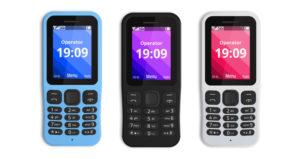
By BarboS @ Shutterstock.com
Have you recently paid $1,000 or more for a fully loaded smartphone that can do it all? If you’re like many Americans, the answer is probably yes. the prices people are paying for smartphones has skyrocketed. But those expensive phones still aren’t available to many people around the world who simply don’t earn enough to afford the high price.
In places where people can’t afford high end smart phones, a new trend is occurring, the rise of what are known as “smart feature phones.” These are phones with features similar to a smartphone, but without all the bells and whistles. Newley Purnell reports on the trend for The Wall Street Journal, writing:
The hottest phones for the world’s next billion users aren’t made by smartphone leaders Samsung Electronics Co. or Apple Inc. In fact, they aren’t even smartphones.
Millions of first-time internet consumers from the Ivory Coast to India and Indonesia are connecting to the web on a new breed of device that only costs about $25. The gadgets look like the inexpensive Nokia Corp. phones that were big about two decades ago. But these hybrid phones, fueled by inexpensive mobile data, provide some basic apps and internet access in addition to calling and texting.
Smart feature phones, as they are known, are one of the mobile-phone industry’s fastest-growing and least-known segments, providing a simple way for some of the world’s poorest people to enter the internet economy.
While global smartphone sales began sliding last year as markets became saturated, smart feature phone shipments tripled to around 75 million from 2017, according to research firm Counterpoint. Some 84 million are likely to be shipped this year.
Even as rich nations start to roll out 5G technologies, some 3.4 billion people around the world remain cut off from the internet, according to We Are Social, another research firm. Most of them already use traditional, unconnected mobile phones, meaning they can easily make the transition to similarly shaped devices capable of high-speed web connections.
Read more here.
